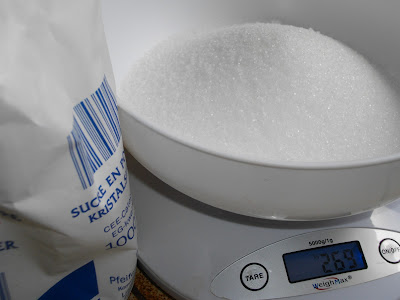We recently went to the international, secular charity and community, Emmaus. We just hopped on a public bus as we are car free and within fifteen minutes after leaving our small city, we were in the countryside.
 |
| Wheat interlaced with bright poppies |
 |
| An overcast day, but thankfully no rain |
 |
| I have a thing for undulating farm roads |
A window-framing old vine adorns a small stone building
There are so many aspects of living in France that I appreciate and one of them is encountering charming visual vignettes: a curtained-with-exquisite-lace tiny window, deeply set in a thick stone wall; a terracotta flower pot exuberately filled and bolted smack on the middle of a stone cottage's wall; and the scene below, a thin strip of a flower bed flanking the village main street, not to mention the matching roof tiles on the property's entrance pillar.
Emmaus was founded by Abbé Pierre, a much loved figure in France. His idea was to help down-and-out people by giving them work and a place to stay, thereby creating a community. There are many interesting stories about him, but one of my favourites is during a deadly frigid Parisian winter decades ago he burst into a radio station and did an impromptu broadcast that people were dying from the cold in the streets.
Emmaus collects unwanted furniture, clothing, appliances and the like, selling them to the public. Former homeless people work in the stores while living together close by. The Emmaus at Angouleme is situated in what I suspect is a former paper mill. It is a large property located just outside the city among vineyards and wheat fields.
Emmaus collects unwanted furniture, clothing, appliances and the like, selling them to the public. Former homeless people work in the stores while living together close by. The Emmaus at Angouleme is situated in what I suspect is a former paper mill. It is a large property located just outside the city among vineyards and wheat fields.
 |
| That's a painting of Abbé Pierre on the food truck |
Down this quiet alley is where the community lives.
 |
| Nice palm tree on the left! |
 |
| The electronics shop is on the front right |
 |
| The upstairs book hall in the main building is marked by a leaning tower of books |
 |
| We both spent quite a bit of time exploring the books together |
Looking down from the mezzanine book shop, the very spacious hall of the main shop can be seen.
Except for the book shop, all the other shops keep your purchases and issue a ticket which is brought to the cashier in the main building. Then when you are ready to go, you present your paid voucher at the particular shop to pick up your stuff. I very cleverly found a petite panier (basket) that accommodated my cups, saucers, and a glass bowl, all which The Calm One carefully wrapped in newspaper provided by the china shop. With an electronics-laden knapsack, off we went to catch our bus back to the city and our potager.
 |
| The Calm One doing his beast of burden number (knapsack is not in view) |
In France, it is easy to locate the bus stop you want because the number of the bus is clearly marked on the road. So yes, I am allowed to leave home alone as it is highly likely I will be able to return. My lousy sense of direction is legendary--if I tell you to go in a certain direction, make sure you go the opposite as I am never right. However, I might take the right bus in the wrong direction, but eventually even I will figure out I am going in the wrong direction and correct my mistake!
A solar panel on a nearby house's roof caught my eye. As this region lends itself to that kind of energy production, hopefully we will be able to get a solar panel for our roof soon.
My share of the goodies cost only three euros--I know, heavy spender! I especially needed a strong and tightly woven basket for berry harvesting. My old one allowed berries to go rolling down the garden path where they were mistaken as prey by Dayo the cat.
As our potato crop is just starting to come in, The Calm One made his speciality, kitchen sink potato salad, the other day and the heavy, cobalt-blue glass bowl looks just smashing with the yellow of the salad which boasts quite a few hard-boiled eggs. Stay tuned for the recipe and instructions for this family classic. As I have found a few interesting recipes in that old French cookbook pictured above, stay tuned for those also. A bientôt!



















